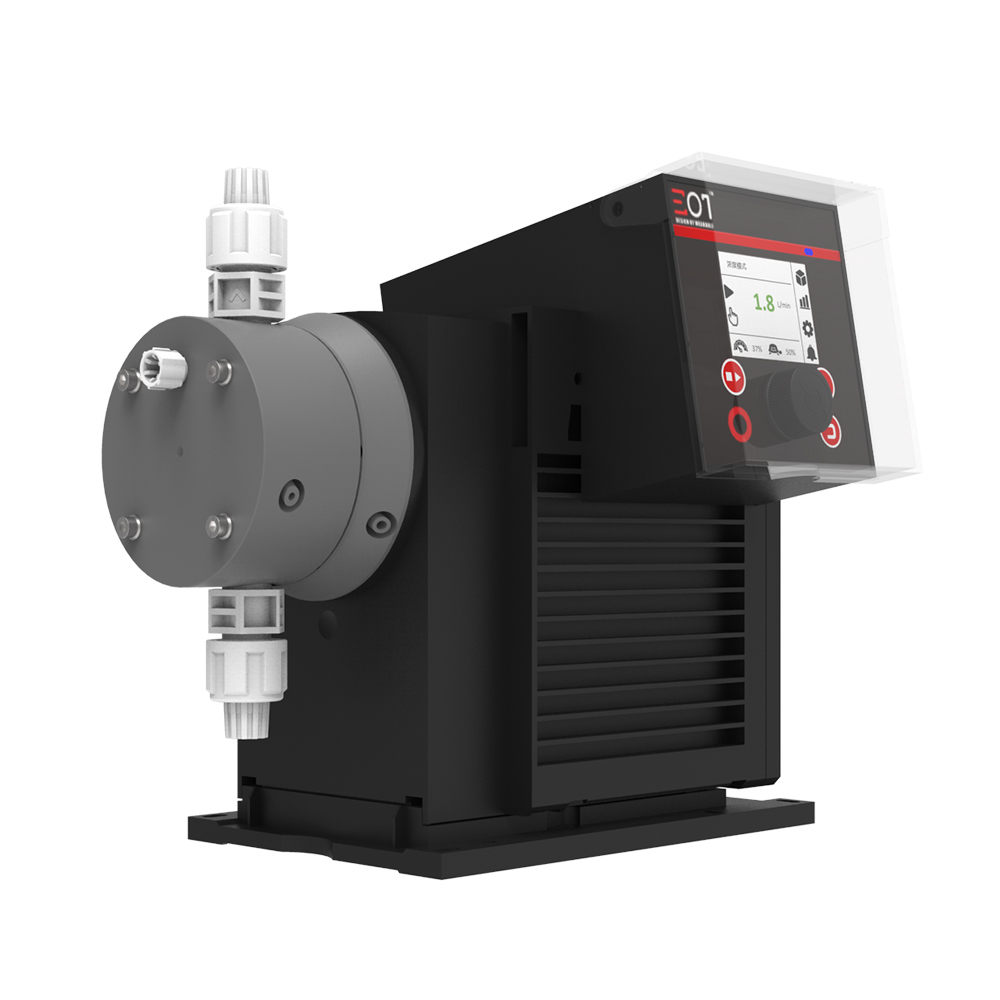How Digital Dosing Pumps Help Optimize Chemical Usage and Protect the Environment
In today's industrial environments, precision and sustainability work together, not against each other. One technology that illustrates this synergy is the digital dosing pump. These systems are transforming how businesses manage chemical dosing by providing unmatched accuracy, efficiency, and environmental safety. In this article, we discuss the impact of digital dosing pumps on chemical dosing and the safety and environmental benefits of their operations.
The Need for Smarter Chemical Dosing
Chemical dosing systems have a reputation for unreliable flow systems, user error, and lagging maintenance. These problems become magnified in economically sensitive industries such as hydrology, metallurgy, energy production, and bioprocessing.
Digital dosing pumps have programmable, accurate, and automated chemical dosing, addressing issues that were previously insurmountable. In addition to boosting performance precision standards, industries can also proactively combat chemical waste, operational standstill, energy waste, and pollution.
How Digital Dosing Pumps Work
Digital dosing pumps have a vector motor that drives a diaphragm mechanism. This motor draws in and excretes fluids in exact quantities, enabling ultra preicsion reciprocating motion. Like steper motors and servo motors, digital dosing pumps utilize complex algorithms for motion control, thus enabling precision as fine as ±0.2%, ensuring consistent and accurate dosing even under fluctuating flow or pressure conditions.
These systems often include:
Integrated sensors to monitor pressure, flow rate, diaphragm status, and even the presence of air bubbles.
Smart control modules to manage dosage in real time.
Wireless connectivity (via Wi-Fi or 4G) for remote operation, monitoring, and diagnostics.
They support multiple control modes, including:
Time-based dosing
Flow-proportional dosing
pH and concentration-linked PID control
Both features ensure accurate dosing and handle a range of industrial applications from acis metals processing to fragile enzyme additions in bioenergy systems.

Optimizing Chemical Usage: Reducing Waste and Cost
The more traditional digital dose systems contribute to the lack of environmental conservation by the over chemical dosing. This type of system outweighs its benefits by relying on overdosing to always ensure that a process works. Erfeetiveness not only boosts expenses but in the process of ensure effectiveness the addition of chemicals can lead to contamination in systems that are situated downstream which multiplies the requirement of treatment.
Digital dosing pumps mitigate this by:
Real-time flow and pressure monitoring: These allow precise adaptation to changing system conditions, ensuring only the necessary amount of chemical is used.
Automated anomaly detection: If bubbles, blockages, or diaphragm wear are detected, the system alerts the operator or self-adjusts, preventing waste and spills.
High turndown ratios (up to 1:1000): These allow for extreme flexibility in handling low or variable flow requirements without compromising precision.
Adding pH to water for municipal use or adding sulfuric acid to battery production are dosing processes that require precision.
Environmental Benefits: Preventing Pollution and Resource Overuse
Digital dosing pumps play a pivotal role in pollution prevention and resource conservation. Their contribution includes:
1. Leak Prevention and Containment
The system has YLC (Pressure Monitoring) and advanced LDC (Liquid Drainage Control) sensors that ensure there are no internal leaks or diaphragm ruptures, which allows the system to constantly monitor internal leaks. If such a condition arises, the system shuts down and alerts are activated which in turn prevents the release of damaging chemicals from the system to the surroundings.
2. Efficient Use of Resources
Over reaction leads to limited chemical usage which these pumps mitigate. Over reaction not only limits the chemicals but transports the or in other words, reduces the total chemicals needed due to lessen the construction, packaging, and transport.
3. Energy Efficiency
The use of vector motors and smart control logic reduces energy consumption compared to older mechanical systems. Many digital dosing pumps also allow for automatic shutoff during idle periods or low demand.
4. Safe Handling of Hazardous Substances
The use of PTFE, PVDF, and certain grades of stainless steel ensure high corrosion resistance for reactor materials, components and valves, and pumps. These materials are essential for industries that use hydrochloric acid and other oxidizing agents on a regular basis.
Applications Where Digital Dosing Pumps Make a Difference
The environmental and efficiency benefits of digital dosing pumps are especially critical in the following industries:
Water and Wastewater Treatment
A dosing device maintains precise control of chemical dosage for chlorine, flocculants, coagulants, and pH adjustments. Chlorine dosing, for example, needs precision control to avoid overdosing which may result in harmful discharges, and undermining water quality through underdosing.
New Energy and Copper Foil Production
For example, in lithium battery and copper foil industries, precise chemical dosing improves the coating and etching of the materials. Even at high viscosities and pressures, digital pumps guarantee a steady flow of the liquid.
Bioenergy and Enzyme Dosing
In biological fermentation or biodiesel processing, enzyme activity is sensitive to concentration. Digital dosing ensures optimal reactions with minimal resource use.
Metal Processing and Smelting
Corrosive acid additives are common here. Dosing pumps with corrosion-resistant components provide reliable performance, reducing the risk of hazardous leaks or spills.
Automotive Paint Mixing
Accurate dosing of masterbatch colors ensures consistent finishes while reducing waste in paint production lines.
Features That Enable Sustainability
Digital dosing pumps aren’t just about flow—they're intelligent process tools equipped with:
Advanced Monitoring Systems
Continuous feedback on flow rate, pressure, and wear.
Alarm functions for blockage, leakage, or pressure loss.
Automatic exhaust functions to purge trapped air, ensuring dosing accuracy.
Wireless Remote Access
4G and Wi-Fi connections enable operators to monitor and control the system from a central control room. This real-time control allows for quicker problem resolution and implementation of optimization data.
Modular Design
The modular construction allows for flexible expansion and fast installation, minimizing downtime and system disruption. Units can be configured in parallel or series to match the exact needs of a process, avoiding over-engineering.
Case Example: Flow Accuracy and Economic Impact
Let’s consider a dosing application requiring the addition of 1 liter of acid per hour to a cooling system. A traditional system with a 5% error margin may overdose by 50 ml/h. Over a year (assuming 24/7 operation), that results in:
438 liters of wasted acid
Higher neutralization costs
Greater environmental discharge
In contrast, a digital dosing pump with ±0.2% accuracy would waste only 1.75 liters per year—a reduction of over 99%. Multiply this impact across dozens of pumps in an industrial facility, and the cumulative savings in chemicals, labor, and environmental penalties are substantial.
Future Outlook: The Role of Smart Dosing in Greener Industry
As industries face mounting pressure to reduce emissions and increase efficiency, smart dosing technologies will play a pivotal role. Emerging features include:
AI-based dosing algorithms that learn system patterns and optimize usage.
Integration with SCADA systems for plant-wide automation.
Predictive maintenance based on sensor data to reduce unplanned downtime and extend equipment life.
Hybrid technologies are permitted under evolving regulations. For example, many nations are offering tax benefits for demonstrating lowered chemical and pollution emissions, which is pushing the benefits of digital technology.
Digital dosing pumps represent a major step forward in chemical management—blending precision, intelligence, and sustainability. By reducing chemical waste, enhancing process control, and preventing environmental contamination, these systems offer both economic and ecological returns.
Whether in water treatment, bioenergy, metallurgy, or high-tech manufacturing, the adoption of digital dosing technology is not just a matter of performance—it’s a strategic move toward a cleaner, more responsible industrial future.


